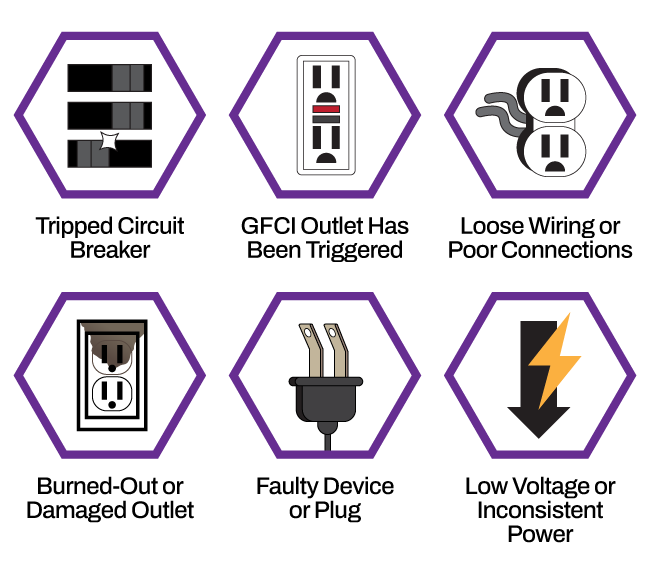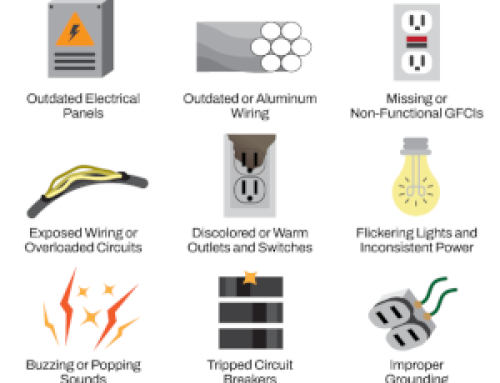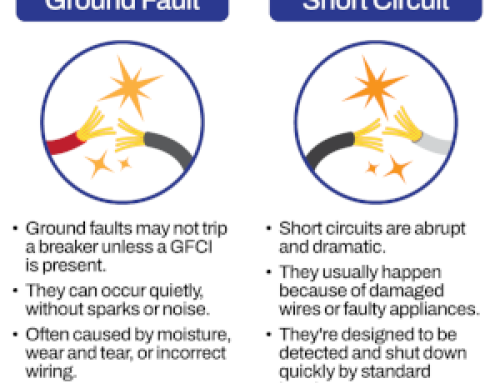Few things are more frustrating than plugging in a device and discovering your outlet isn’t working. Whether it’s a phone charger, a kitchen appliance, or your home office setup, a dead outlet can throw off your routine.
But beyond the inconvenience, a non-working outlet could signal anything from a simple reset to a serious wiring issue that requires immediate attention.
In this article, we’ll explore the most common reasons your electrical outlets might stop working, how to safely troubleshoot the problem, and when it’s time to call in a licensed electrician to take a closer look.
Here are the top 6 reasons why your outlets aren’t working:

1. Tripped Circuit Breaker
What Happens: Circuit breakers are your electrical system’s first line of defense against overloads. When too much electricity flows through a circuit—typically from running multiple high-power devices simultaneously—the breaker trips to prevent overheating and potential fires.
Why It Occurs:
- Multiple high-wattage appliances on the same circuit
- Aging breakers that trip at lower thresholds
- Short circuits in connected devices
- A gradual increase in electrical demands over time
Prevention: Understanding your circuit capacity helps avoid overloads. Most bedroom circuits can safely handle about 1,800 watts continuously.
2. GFCI Outlet Has Been Triggered
What Happens: Ground Fault Circuit Interrupters (GFCIs) monitor electrical current flow and shut off power within 1/40th of a second when they detect even tiny imbalances that could indicate current leakage—a potential shock hazard.
Why It Occurs:
- Moisture infiltration in wiring or devices
- Aging GFCI outlets (typically need replacement every 10-15 years)
- Ground faults in downstream outlets
- Electrical noise from certain devices
Critical Information: One tripped GFCI can affect multiple outlets downstream. GFCI outlets protect everything “after” them on the circuit, which is why a bathroom GFCI might control outlets in adjacent areas.
3. Loose Wiring or Poor Connections
What Happens: Electrical connections naturally loosen over time due to thermal expansion and contraction, vibration, and normal settling. Loose connections create resistance, generate heat, and can eventually fail completely.
Why It Occurs:
- Natural aging of wire connections
- Improper initial installation techniques
- Aluminum wiring in older homes (1960s-1970s)
- Vibration from nearby appliances or home settling
- Corrosion from moisture exposure
Warning Signs: Intermittent power, slight burning smells, or warm outlet plates often indicate loose connections developing.
4. Burned-Out or Damaged Outlet
What Happens: Outlets contain metal components that can wear out, corrode, or burn due to repeated use, power surges, or manufacturing defects. Internal arcing creates heat that damages the outlet’s ability to make proper electrical contact.
Why It Occurs:
- Repeated plugging and unplugging wearing out contacts
- Power surges damaging internal components
- Overloading outlets beyond their rated capacity
- Environmental factors like humidity or temperature extremes
- Manufacturing defects in lower-quality outlets
Lifespan Expectations: Quality outlets typically last 15-25 years with normal use. High-use outlets (like kitchen counters) may need replacement every 10-15 years.
5. Faulty Device or Plug
What Happens: Sometimes the problem lies with the device you’re trying to plug in, not the outlet itself. Damaged plugs, internal device failures, or incompatible electrical requirements can create the appearance of outlet failure.
Common Device Issues:
- Damaged or corroded plugs
- Internal short circuits in appliances
- Ground fault leakage in devices triggering GFCI protection
- Power supply failures in electronic devices
Professional Insight: Before assuming outlet failure, professional electricians always test with multiple devices to isolate the problem source.
6. Low Voltage or Inconsistent Power
What Happens: Voltage drops, power fluctuations, or electrical “noise” can cause outlets to work intermittently or fail to power devices properly. This often indicates problems with your home’s wiring or utility supply.
Why It Occurs:
- Undersized wiring for the electrical load
- Voltage drops from the utility company issues
- Poor connections in the electrical panel
- Shared circuits with high-demand appliances
- Aging infrastructure in older neighborhoods
Prevention Strategies: Protecting Your Electrical Investment
- Load Management: Understanding circuit capacity prevents overloads that damage outlets and create safety hazards.
- Environmental Protection: Keeping outlets dry, clean, and at stable temperatures extends their lifespan significantly.
- Quality Devices: Using surge protectors and avoiding cheap electrical devices reduces stress on your outlets.
- Regular Inspections: Professional electrical inspections every 3-5 years catch problems before they become dangerous or expensive.
- Upgrade Planning: Older homes often benefit from systematic electrical updates rather than piecemeal repairs.
Frequently Asked Questions
Leave The Dangerous Work to Professionals
Outlet issues are common, but they shouldn’t be ignored. Whether it’s a tripped GFCI or a warning sign of a bigger wiring problem, it’s always better to be safe than sorry.
At Brand Home Service, our licensed electricians are ready to diagnose and repair any electrical issue—quickly and safely. From simple fixes to complete rewiring, we’ll help ensure your home stays powered, protected, and up to code.
Schedule your inspection or electrical repair in Lafayette, IN —and power your home with confidence.



